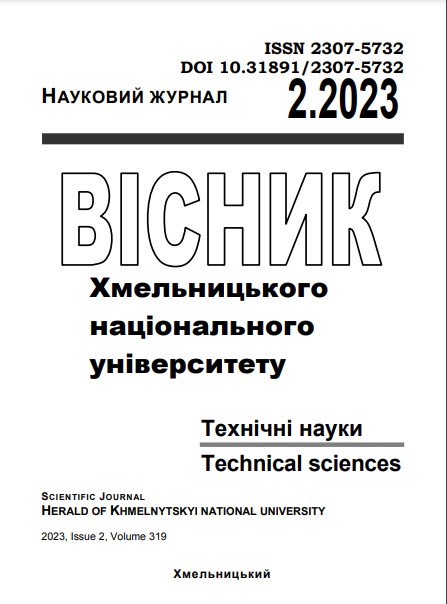MODEL OF A CHAOTIC ULTRA-WIDEBAND INFORMATION TRANSMISSION SYSTEM FOR WIRELESS SENSOR NETWORKS
DOI:
https://doi.org/10.31891/2307-5732-2023-319-1-284-288Keywords:
wireless sensor networks, chaos communication, ultra-wide-band systems, dynamic systems, synchronizationAbstract
Distributer measuring systems, consisting of interconnected wireless sensor nodes with autonomous supply, have plenty of applications in different areas of engineering end technology. Therefore, wireless sensor network design and optimization is a vital problem in informational technologies and computer engineering. Regardless of particular application and architecture, a wireless sensor network consists of several small sensor nodes somehow distributed in an area of inspection. Such a design ensures a distributed parameter measuring, according to which, each node performs preprocessing procedures for the data, which are to be aggregated by a so-called sink node and sent via other networks, e.g., wired or wireless local area network. For healthcare solutions, it is important to ensure a stable connection with the network and server back-end to provide a high-level analysis based on predicting methods of machine learning algorithms. This paper describes an application of an ultra-wideband communication model based on chaos synchronization as a low-power and efficient alternative solution for building wireless sensor networks. Thus, using chaotic signals as information carriers in wireless communication has several advantages, including a wide smooth spectrum, high information capability, cybersecurity, and low power consumption. The synchronization problem is one of the most vital tasks to be solved to design a chaos application for ultra-wide-band communication. Being well-studied for periodic signals, modern synchronization theory contains plenty of solutions for classical telecommunication and radio engineering systems, however, it is not developed enough for chaotic systems. Hence, a one-directional dissipative synchronization between two Chen systems is studied in the first section. The second section is devoted to the computer simulation of the model, described in the previous section. All the models built and the simulations performed have been done using MATLAB/Simulink software. The negative impact of channel noise and inequality of system parameters is considered. The possible way how to improve technical characteristics is also provided. Proposed models are to be used to design and develop low-cost wireless sensor networks for multi-channel healthcare solutions.
Downloads
Published
Issue
Section
License
Copyright (c) 2023 МАКСИМ СЛОБОДЯН (Автор)

This work is licensed under a Creative Commons Attribution 4.0 International License.

